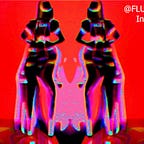The Evolution of AI Art
Abstract: Artificial Intelligence (AI) has revolutionized the field of art, offering new tools and techniques for creative expression. This analysis delves into the evolution of AI art, examining its origins, major artists, significant works, and potential future trends. By exploring the intersection of technology and creativity, this report provides an overview of the transformative impact of AI on the art world.
- Introduction: Art has always been a reflection of human creativity and expression. With the advent of AI, a new dimension has been added to artistic practice, challenging traditional notions of authorship and creativity. This report explores the evolution of AI art, tracing its historical roots, highlighting key artists and their contributions, and projecting potential future directions.
- Historical Context: The roots of AI art can be traced back to the mid-20th century when artists and technologists began experimenting with computational methods to create visual art. Notable early examples include Harold Cohen’s AARON, a program capable of autonomously generating intricate drawings and compositions. These pioneering efforts laid the groundwork for subsequent developments in algorithmic art and computational creativity.
- Key Artists and Their Works:
a. Mario Klingemann: Klingemann is renowned for his groundbreaking work in neural network art, exploring the intersection of AI and visual aesthetics. His piece “Memories of Passersby I” exemplifies his innovative approach, using AI algorithms to generate dynamic portraits that challenge conventional notions of identity and representation.
b. Robbie Barrat: Barrat gained widespread acclaim for his experimentation with Generative Adversarial Networks (GANs), a machine learning technique that pits two neural networks against each other to generate novel outputs. His work “Nude Descending a Staircase” reinterprets Marcel Duchamp’s iconic painting through the lens of AI, raising questions about the nature of artistic authorship and creativity in the digital age.
c. Refik Anadol: Anadol’s immersive installations blur the boundaries between physical space and digital media, leveraging AI algorithms to transform data into captivating visual narratives. His project “Machine Hallucination” immerses viewers in a surreal landscape of algorithmically generated imagery, inviting them to explore the possibilities of machine intelligence as a creative tool.
d. Anna Ridler: Ridler’s work explores the intersection of AI, literature, and storytelling, using machine learning algorithms to reinterpret classic texts in visual form. Her project “Fall of the House of Usher” combines Edgar Allan Poe’s gothic tale with AI-generated animations, creating a hauntingly immersive experience that challenges conventional modes of narrative representation.
4. Potential Future Trends:
a. Collaborative Creation: The future of AI art may involve collaborative endeavors between human artists and machine algorithms, blurring the lines between human creativity and machine intelligence. By harnessing the unique strengths of both, artists can create artworks that transcend individual capabilities, opening new possibilities for artistic expression and collaboration.
b. Ethical Considerations: As AI becomes increasingly integrated into artistic practice, ethical considerations surrounding issues such as data privacy, algorithmic bias, and cultural appropriation become paramount. Artists and technologists must navigate these complex issues to ensure that AI art remains ethically and socially responsible.
c. Interdisciplinary Fusion: The convergence of AI with other disciplines, such as music, dance, and literature, offers exciting opportunities for innovation and experimentation. Artists may explore new modes of expression by integrating AI algorithms into established art forms, pushing the boundaries of creativity and interdisciplinary collaboration.
d. Emotional Intelligence: Future developments in AI art may focus on imbuing AI systems with emotional intelligence, enabling them to interpret and respond to human emotions in real-time. By bridging the gap between artificial and human intelligence, AI art can create more immersive and emotionally resonant experiences for audiences.
Conclusion: The evolution of AI art represents a paradigm shift in the creative landscape, offering new tools and techniques for artistic expression. By tracing the trajectory of key artists and their works, and by projecting potential future trends, this report provides a detailed analysis of the transformative impact of AI on the art world. As technology continues to evolve, AI art stands poised at the forefront of innovation, inviting us to reimagine the possibilities of artistic expression in the digital age.
